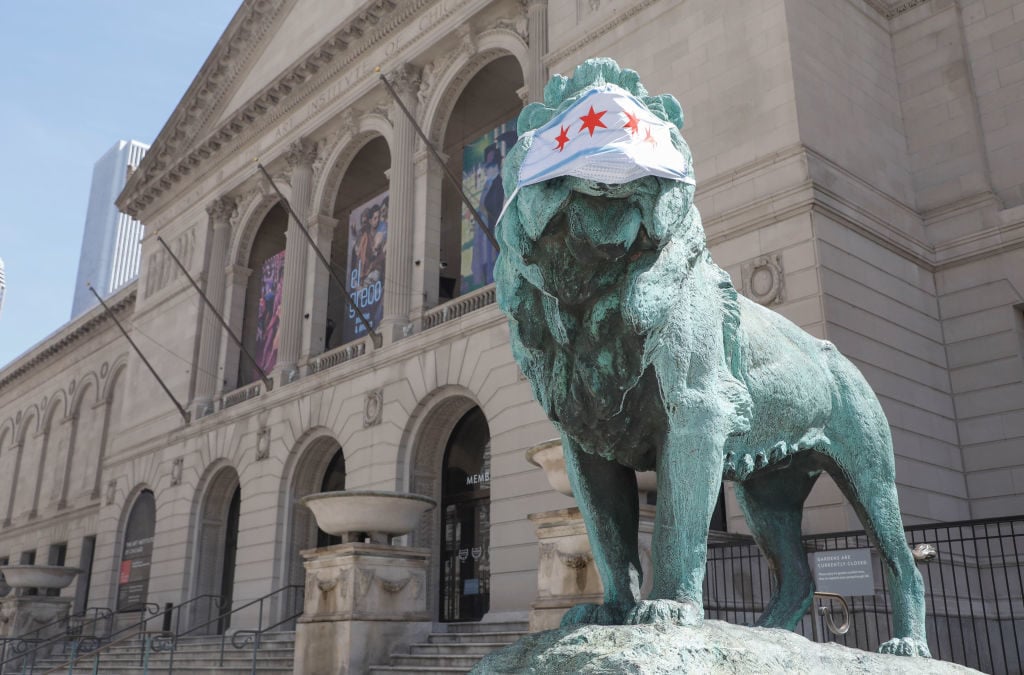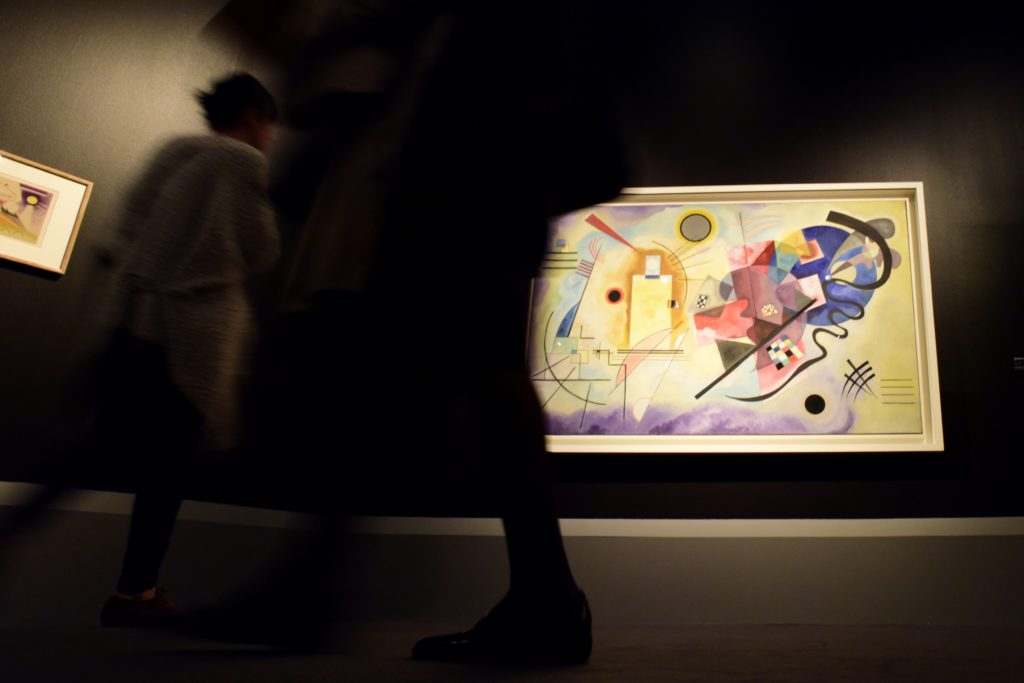Art Industry News is a daily digest of the most consequential developments coming out of the art world and art market. Here’s what you need to know on this Monday, May 4.
NEED-TO-READ
BP Won’t Judge This Year’s Portrait Contest – For the first time in more than two decades, BP will no longer be represented on the panel of judges that determines the winner of the prestigious £35,000 ($43,400) BP Portrait Award. A spokesperson for the museum said the decision was decided jointly with BP and was unrelated to recent high-profile campaigns and ongoing advocacy pushing for the institution to sever ties with the oil giant. The winner of the award will be announced on Tuesday. (Guardian)
New App Seeks to Bring Street Art Across America – Graffiti artists are returning to the streets (six feet apart, of course) under the auspices of a new technology company, Beautify, that seeks to facilitate mural painting on rundown city walls. Since many businesses have closed up shop amid COVID-19, some, like the kitchenware store Sur La Table in LA, are using the app to commission street artists to make murals on their boarded-up windows. The company is working with corporate brands to sponsor new public art at $10,000 apiece, with the goal of producing 1,000 murals by 1,000 artists in 100 cities as neighborhoods across the US begin to reopen. (New York Times)
Russian Avant-Garde Treasures Found in Museum Basement – The art historian Andrey Sarabyanov has made what he calls an “astounding” discovery: dozens of works by leading avant-garde artists including Wassily Kandinsky, Alexander Rodchenko, and Varvara Stepanova languishing in the basement of an obscure history museum in Russia’s Kirov region. Sarabyanov—who learned about the hidden works, many of which were entirely unknown to historians, from a local official—believes they were abandoned after being included in an early Soviet traveling exhibition in 1921. “It is a very important discovery which will not only bring new works to light but will also tell the fascinating story of the traveling exhibitions in Russia in the first years after the October Revolution,” says historian Natalia Murray. (The Art Newspaper)
Where Are the Images of COVID Deaths? – Harvard art history professor Sarah Lewis pens an op-ed exploring why we have seen so few images of the coronavirus crisis (other than the oft-reproduced spiky depiction of the virus itself). Due to privacy laws, professional images from inside medical zones remain rare, leaving us with pie charts and images of politicians behind lecterns instead of visual representations of the human toll. But without photographs that communicate the scale of the calamity, she argues, the virus will be harder to combat. “Images force us to contend with the unspeakable,” she writes. (New York Times)
ART MARKET
Gallerist Helga de Alvear Donates to COVID Research – The Madrid gallerist has donated $1.1 million to support research to find a vaccine for the novel coronavirus. Her gift will fund the work of the National Center for Biotechnology in Madrid and help provide protective equipment for its scientists. Spain’s death toll from the virus currently stands at just under 25,000. (Artforum)
This Artist Is Driving Africa’s Market Boom – The market’s renewed interest in the Nigerian painter Ben Enwonwu is having a ripple effect on the demand for younger contemporary artists in Africa. Sotheby’s first online-only modern and contemporary African art sale in March saw a 46 percent increase in bids compared to a year ago. Now, more works by Enwonwu are coming out of the woodwork. One was recently uncovered thanks to an unwitting owner’s Google search. (Quartz)
Gagosian Unveils Frieze Week Viewing Room – In keeping with its strategy to unveil single-work viewing rooms tied to major market events, Gagosian has launched an online portal dedicated to a work by Cecily Brown, Figures in a Landscape 1 (2001), priced at $5.5 million (about $1 million less than the artist’s current auction record). Like its previous online viewing room dedicated to a work by Albert Oehlen, this one combines auction-house catalogue-style art historical context (a bit of hyperbole included) as well as data about Brown’s growing market. (Press release)
COMINGS & GOINGS
Uffizi Cuts Capacity Ahead of Reopening – The Italian museum that houses The Birth of Venus plans to reopen in mid-May—but with precautions. Its director, Eike Schmidt, estimated that only half the normal number of guests—450 people—would be admitted at one time. Since the institution has lost around €10 million in revenue since it closed in March, some building projects that had been in the works will likely be put on hold. (TAN)
Iran’s Art Galleries Prepare to Reopen – After a two-month shutdown, art galleries in Iran were permitted to reopen on April 20. Although some remain closed, a handful have registered with the health ministry to welcome visitors again, providing they adhere to strict limitations on the number permitted to enter at one time. The country’s labor ministry is working to estimate the amount of economic damage that small businesses, including arts galleries, suffered as a result of the closures. (Tehran Times)
Russia’s Art World Returns—But Looks Different – As Russia begins to reopen after more than a month and a half on lockdown, its art institutions are surveying the damage. The director of the Hermitage, Mikhail Piotrovsky, estimates that half the museum’s annual budget has been lost. Many institutions are planning to limit visitor numbers to help preserve public heath, which means they will continue to lose income even after they reopen. Russia’s culture minister, Olga Lyubimova, said in an official statement that the government would cover the losses of state museums like the Hermitage, but private museums and the commercial art sector will not receive support. (Les Journal des Arts)
FOR ART’S SAKE
Antony Gormley Sculpture Stirs Controversy – Not everyone is thrilled with Antony Gormley’s proposal for a sculpture commemorating code-breaker Alan Turing at the University of Cambridge, where he once taught. The heritage body Historic England has criticized the 12-foot-tall abstract sculpture, which it says could interfere with the “architectural, landscape, and aesthetic significance of the college.” (The Art Newspaper)
Royal Academy Is Losing $1.2 Million Each Month – The artist-run museum, unlike many of its London peers, does not receive government funding. Without relied-upon income from tickets, it is losing around $1.2 million each month—and facing one of the biggest financial challenges in its history. Still, the museum plans to forge ahead with its high-profile Marina Abramović exhibition, originally due to open this fall. With a thorough schedule reshuffle as a result of the shutdown, the show will now be pushed to 2021. (ARTnews)
A Small New Jersey Museum Offers Art Classes to Essential Workers – The Hunterdon Art Museum in Clinton, New Jersey, is offering free virtual art classes for essential workers and their children. Classes include painting and drawing, poetry, art journaling, comics, manga, anime, and clay. (NJ.com)
Art Institute’s Lion Face Mask Is Immediately Stolen – Not just what this says about our commitment to wearing masks: just a day after face coverings were installed on the pair of lions outside the Art Institute of Chicago in an effort to encourage mask-wearing, one lion was left without protection. A museum guard saw two men climb the lion and remove the face covering around 11 p.m. on Thursday, April 30. (Hyperallergic)

The lion statue with a mask in front of the Art Institute of Chicago in Chicago, Illinois. Photo: Joel Lerner/Xinhua via Getty) (Xinhua/ via Getty Images.







